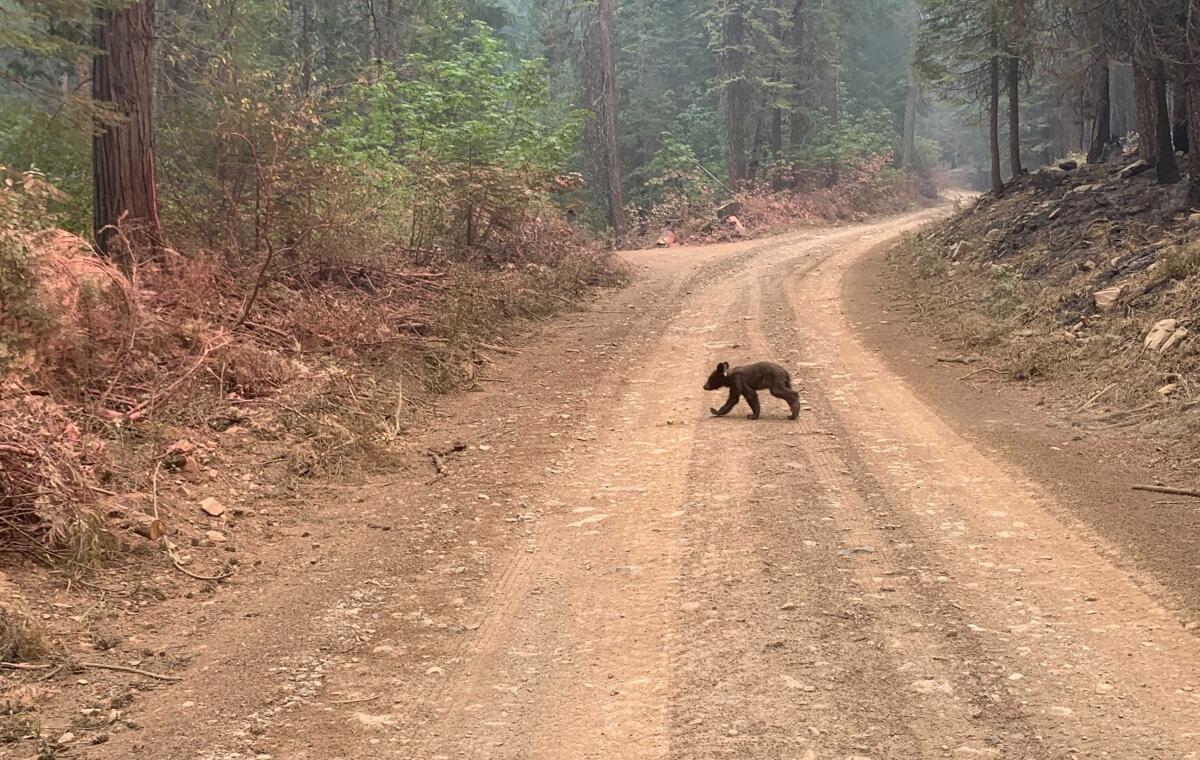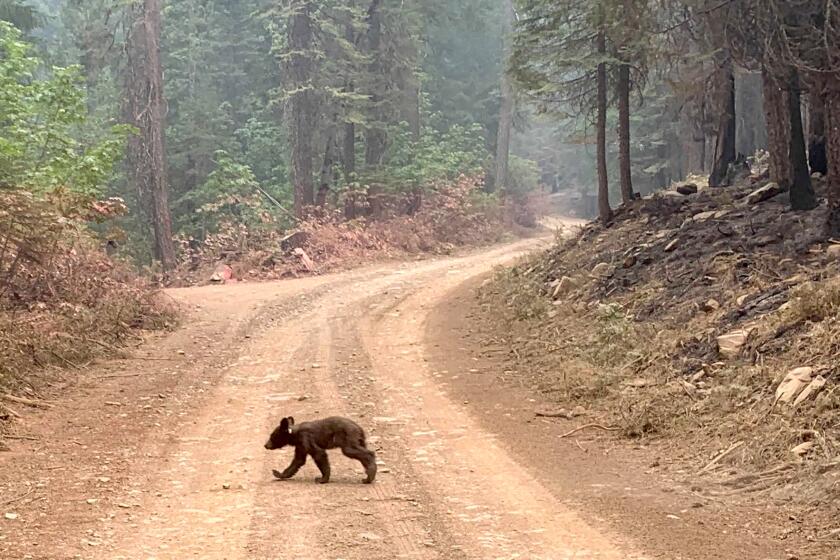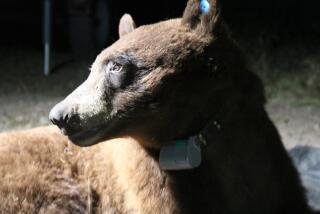Editorial: Are California’s bears in peril? Suspend hunting season until we know

A century after the grizzly bear was hunted to extinction in California, black bears have managed to stake out territory up and down the state and survive. There is bear hunting in the state, but it is highly regulated. No hunter can kill more than one bear in a season, which runs roughly from August to late December, and no more than 1,700 bears can be killed during that period. Cubs are off limits, as are females with cubs.
But how many black bears are there in California? Officials in the state’s Department of Fish and Wildlife have said for years that “the conservative estimate” is 30,000-40,000. Yet when the department put out its annual report of bears killed in the 2020 hunting season, it came up with a dramatically lower population estimate of 15,934. The calculation is imprecise, and the population could be as large as 22,097 or as small as 9,771.
The state arrives at that number of live bears by analyzing dead bears. Hunters are required to buy a tag and turn it in with information on the bear killed, along with the head of the animal, to state wildlife officials, who extract a premolar tooth and use it to determine the age. Between that and the bear’s sex, which hunters must report, along with the number of bears killed, wildlife officials come up with a population count.
Nearly a century after the California grizzly was hunted to extinction, black bears are being killed by motorists in record numbers.
Officials cautioned that the number in the 2020 report might be an underestimate. COVID restrictions may have kept some hunters at home, and social distancing measures restricted the in-person collection of bear teeth. The report notes that the department is “continuously working towards improving our methods of estimating bear abundance.”
The Humane Society of the U.S. has a smart suggestion for how the process can be improved: a real, empirical count of live bears. In a petition to the California Fish and Game Commission, which sets policy on wildlife management for the Department of Fish and Wildlife, the Humane Society argues that the department’s analyses have “no basis in sound science” and asks that the bear hunt be suspended pending a count of live bears. The commission is scheduled to take up the request at its Feb. 17 meeting, and the commission should approve it.
There are plenty of reasons to be concerned enough about the bear population to do a better count. A succession of wildfires has left millions of acres burned, much of that encompassing bear habitat. Ecologists recorded an uptick in bears killed by vehicles last year, particularly on one stretch of U.S. 395 in the eastern Sierra.
Nothing sporting about ‘Hunger Games’ for bears
Then there are the figures from the hunts. In 2013, when hunters could no longer use dogs, the number of bears killed dropped to 1,087 from 1,962 in 2012. Over the next several years, it went from a high of 1,439 in 2014 to a low of 1,028 in 2020 (and back above 1,200 last year.) Yet the number of hunters who bought bear tags has increased from 23,397 in 2013 to 30,387 in 2020.
Department of Fish and Wildlife supervising wildlife biologist Jason Holley says he is confident the bear population is robust enough to withstand a hunt. He attributes the drop in kill numbers to the fact that hunters can no longer use dogs, so hunting is more difficult. He says the sighting of bears in areas that typically haven’t had them — like Bay Area suburbs such as Tracy in San Joaquin County and Contra Costa County — and increasing reports of bear and human interactions all point to a population increasing.
But all those reports are anecdotal and don’t answer this question: Are bears so populous they are encroaching on human neighborhoods, or are humans so populous they are building into bear territory?
“If you don’t know how much of something is there, then you really can’t evaluate the threats from hunting or traffic,” said Fraser Shilling, director of the Road Ecology Center at UC Davis, which studies the impact of roads on wildlife and on human communities. Shilling believes the department should conduct a true bear census.
Bear counts can be done in various ways, including analysis of scat and setting up wiring in bear habitats to gently snag their fur for DNA analysis. The methods are time-consuming and costly, but it would be worth it to get an accurate count of an animal both majestic and ecologically important.
Even Holley, who doesn’t believe the bear population is decreasing, likes the idea of a real census. “If I had my wish, it would be to count a little more precisely,” he said.
The commission should grant his wish — and that of wildlife advocates who care deeply about maintaining the bear population in a state with a bad history of protecting the animals. Suspend the bear hunt until we know how many are out there.
More to Read
A cure for the common opinion
Get thought-provoking perspectives with our weekly newsletter.
You may occasionally receive promotional content from the Los Angeles Times.











